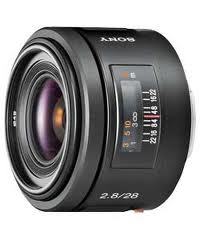
Apertures. What are they, what do they do for us and how do we use them?
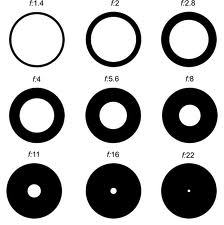
Here’s an illustration of the lens’s apertures or f-stops, from f1.4 (very wide or big) to f22 (very narrow or small).
A typical progression of full aperture stops would look like this:
f2.8, f4, f5.6, f8, f11, f16, f22.
You should try to learn this progression - it is part of the language of photography. You will also come across other f-stop numbers on your camera; f10 and f13 for example - these are third stop or half stop intervals between the full stop values. f13 is just f11 and an extra third. You can sometimes program your camera in the custom functions to increase your apertures in full stops only, in half stop increments or in third stop increments which is usually the default value as it increases your fine control over exposure.
Each full stop or Aperture halves or doubles the amount of exposure - this is important - you must remember this!
So, f8 is twice as much light as f11 but half as much light as f5.6
The aperture is housed in the lens body itself and is controlled via a thumb wheel on modern DSLR cameras, sometimes in conjunction with a small button on the top plate, normally the exposure compensation(+/-) button with an aperture symbol next to it like this:
Setting Apertures on the Camera
To change aperture in Aperture Priority and Manual mode you just press the button whilst turning the thumbwheel and watch the apertures display in the viewfinder. You will notice in the illustration that wide apertures have small numbers (f1.4) and narrow apertures have big numbers (f22). A lot of people get confused by this. Where do these numbers come from - what do they mean? The answer is that they are a mathamatical formula - a pretty simple one actually;
f-stop = the diameter of the aperture divided into the focal length of the lens.
e.g if the diameter of the aperture is 5mm and the lens you are using is a 55mm lens, divide 5mm into 55mm and you get?…f11.
So an f-stop is not a fixed size, it varies from lens to lens, but the key fact is that all lenses when set to f11, or f8 or any other f-number will all be transmitting the same amount of light and hence will all give the same exposure.
What are Apertures really for?
OK, now we know what they are and where they come from but what do they actually do? Clearly they control how much light enters the camera - a big aperture lets in a lot of light, a smaller one reduces the amount of light and so alters exposure. Apertures are obviously a fundamental tool for controlling exposure but then, so too is shutter speed. Why do we need two systems for controlling exposure? Why not just have a single aperture and lots of different, variable shutter speeds - wouldn’t that be enough to control exposure? Actually it would, and that’s exactly how a pin-hole camera works - one aperture, the pin-hole and variable shutter speed (how long you leave the pin-hole uncovered). And it works just fine.
Apertures give us something else - something more important and more useful than merely controlling exposure - they allow us to control depth of field.
What is depth of field?
I’ll give you my own definition:
Depth of Field (DOF) is a ZONE of SHARPNESS, that extends IN FRONT OF and BEYOND the point that you actually FOCUSED on.
Like all ZONES it has a beginning and an end. It has boundaries. There is an area leading into sharpness and an area leading out of sharpness. Then there is an area around the subject that you focused on, where everything seems to be perfectly sharp.
And this zone of sharpness is relative to how close you are to the subject. If you are very close to the subject, the zone is very, very small. If you are a medium distance from the subject the zone is much bigger and if you are a long way from the subject the zone of sharpness may in fact reach as far as the eye can see - to infinity actually. So DOF is a relative value.
Examples of the use of Depth of Field
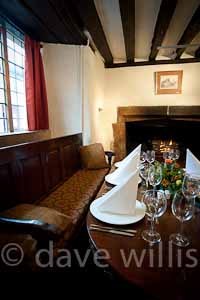
1. In this shot of a restaurant interior, the depth of field needs to cover the foreground and extend to include everything up to the back wall and fireplace. Wide angle lens, focused on the foreground napkins, at f16.
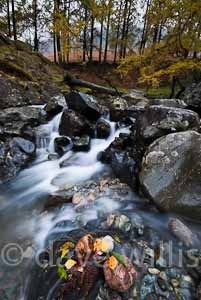
2. In this landscape, everything must be included in the depth of field from front to back. Wide angle lens, focused about third into the frame, f22. (The blurred water is due to long shutter speed - use a tripod!)
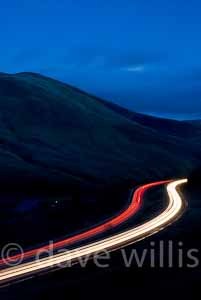
3. In this shot of motorway light trails, there is no foreground detail to worry about and the subject is a long way away so depth of field is not critical. Wide angle lens, focused on the background, f8, tripod.

4. in this shot, the short depth of field helps to isolate the subject (the wine glass) and create a mood. Telephoto lens, fairly close to the subject at f2.8.
How does it work?
Before we go any further, consider focus for a moment. When you focus on an object, you also see a zone of sharpness around the object you focus on - this is the Depth of FOCUS. It’s a three dimensional thing - focus has a beginning a middle and an end. It’s also a relative value.
Try holding your finger up in front of your face. Focus on the knuckle. Notice how the background is thrown way out of focus when you look at your finger? Now look out of the window across the garden at an object - the garden gate would be a good choice. Notice how much more of the area around the gate is focus compared with your finger experiment? Look at a farm across the valley and you’ll notice that nearly everything in your filed of view is in focus. So Depth of FOCUS is relative to how close you are to the object you are focused on. Close up you get almost no Depth of Focus, more distant and get a lot more.
Now, Depth of FIELD (DOF) is the ability of the lens to GROW that ZONE OF SHARPNESS by using a smaller and smaller aperture. We can control how big this zone is by altering the aperture size - it’s a characteristic of apertures that the smaller they are the larger the DOF they create. A wide aperture ((f1.4) will not grow the existing depth of focus by anything at all, but a small aperture (f22) will increase the zone of sharpness, the depth of focus, by a massive amount - and this is what we call depth of field. And it’s still relative to how close you are to the subject.

If you photograph a subject that is very close to the camera lens you will get a tiny depth of focus, and even when you use a small aperture, f16 or f22 the resulting increase in depth of field will still be relatively small. But if you photograph a subject that is further away, you will get a bigger depth of focusand then by using a small aperture you will achieve a much, much bigger depth of field.
It’s all relative to SUBJECT-TO-CAMERA DISTANCE.
Let’s re-cap then.
The widest aperture (f1.4) = minimum DOF
The smallest aperture (f22) = maximum DOF
Get close to a subject to reduce DOF
Get further away to increase DOF
Wide angle lenses exhibit a lot of DOF
Telephoto lenses exhibit reduced DOF

1. A Wide Angle Lens,medium distance and small aperture (f16)= A large depth of field

2. A telephoto lens, short distance and wide aperture (f2.8) = a short depth of field.
Incidentally, that last one, about lenses, why is it that wide lenses have better DOF than telephoto lenses? Well one reason is that a telephoto magnifies a distant image, in effect bringing it much closer to you - as though the camera-to-subject distance was reduced, whereas the wide angle lens pushes the subject away from you, as though the camera-to-subject distance was increased.
So if you absolutely wanted to guarantee a small depth of field, use a telephoto lens, get close to the subject and use the widest aperture!
No comments:
Post a Comment